Ok, so we wouldn’t be telling you how to pack candles for moving if it were not possible at all. But, as we’re sure you realize, packing candles for moving can be quite a challenge—one that is far from guaranteeing a perfect outcome. Many candles are fragile, melt quickly (damaging them and creating a mess), and beg the question of the best way to move candles to your new place.
After all, the purpose of candles usually is to be burned to the bottom of their containers. So wouldn’t it be easiest simply to use up all your candles before needing to pack and move with them?
Doing this might work for some folks, but others save specific candles for particular times of the year, like holiday seasons.
Many people also have keepsake candles, maybe handmade ones, they couldn’t bear to lose. They will probably never burn these. In other words, although using up candles will work in some instances, it won’t work in all of them. So we’re going to explain how to pack candles for moving—even knowing that it can be risky.
This article contains affiliate links. If you use these links to buy something, I may earn a commission. Thanks.
Table of Contents
Common Types of Candles
Candles come in many and varied shapes and sizes—from the tiny candles used for birthday and anniversary cakes to the large cylindrical ones that are decorative and might also fill your home with pleasant aromas.
Different types of candles should be handled differently so we thought it would be helpful to briefly go over the different types and helpful tips for each one.
Tiny Candles for Cakes
People often forget these candles even exist—at least until the “special occasion” arrives and you have none in the house, or they sat near the oven too long and partially melted. No worries about moving them, since you can buy new ones for a dollar or less.
Votive Candles
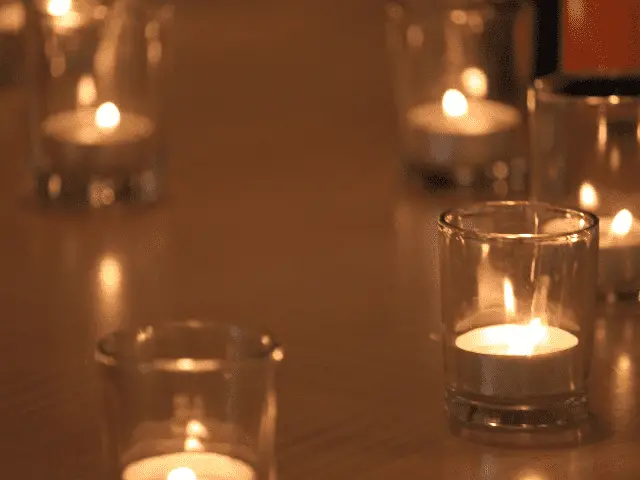
Votives are fatter than birthday candles but about the same height. Besides their use in Christian prayer, votives are used as room décor (and are the best type of romantic candles!). They come in different colors and are sometimes scented. While prices vary by type and manufacture, they generally are inexpensive and are often sold in multiples.
They are easy to pack, though, and aren’t all that fragile.
Taper Candles
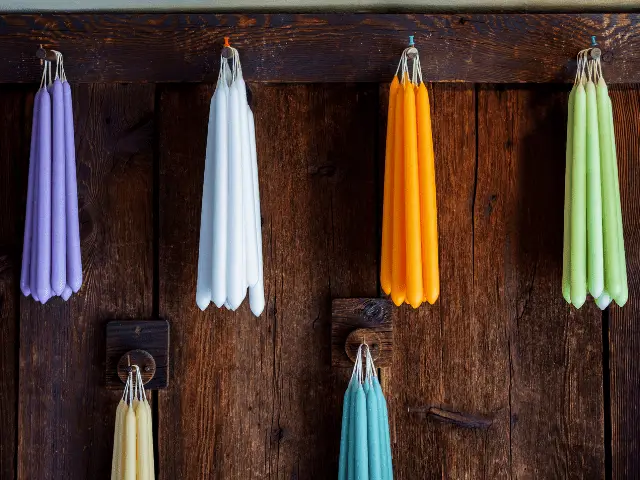
Tapers (or dining candles) are fragile—probably the most breakable of any candle type. When in use, they are held in narrow candle holders and can burn down to nothing but a stump over a few hours. These also cost relatively little. We’ll explain how to pack these for moving. But unless they carry special meaning or you have many of them, save the trouble of packing.
Pillar Candles
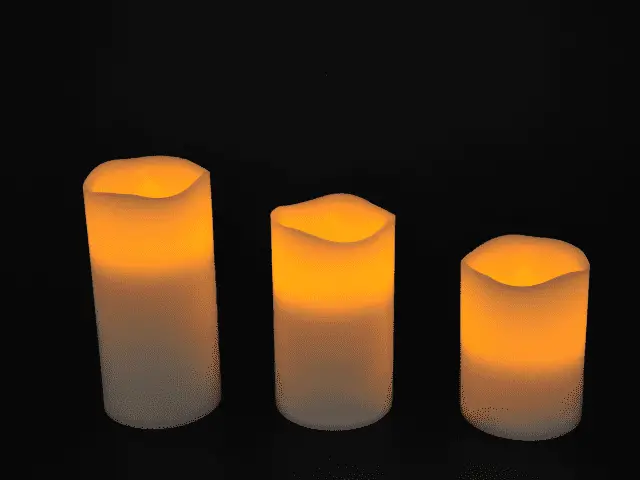
Pillar candles are the largest and often most elaborate candles. They come in various heights and widths. They stand up by themselves, though sometimes they are set on saucers or placed in glasses. It takes a long time to use up pillar candles! And you might not even want to burn them if they’re fancy or handmade. It might take a long time, but pillar candles will melt.
Tea Light Candles
Tea lights come in various colors and might be scented. They are much like votives, except for being encased in a thin metal holder that lets them burn down and liquefy completely. The wick remains anchored to the metal and, since they are most often burned in a small glass, the liquid wax will solidify to the shape of its container and remain decorative.
Jar Candles
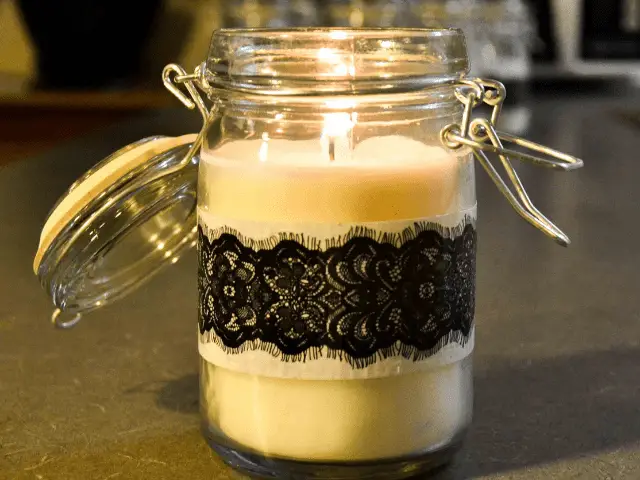
Among their many benefits, jar candles are great for those who want to pack and move their candles. Just be sure the glass jar is well protected. Jar candles also last a long time and provide more light. In addition, if scented, the container will help preserve the aroma.
Perhaps best of all, the jar helps preserve and protect the wax.
Common Types of Candle Materials
Before packing your candles, you need to understand the materials used for each, as well as the properties of those materials. Why? Because the melting point for each type of is different and will effect how well they hold up in the back of your moving truck.
It turns out that there are several materials used in candle making.
Paraffin
Paraffin wax is s substance commonly used in making candles. Did you know that it’s derived from non-renewable petroleum or coal, though? Paraffin has various forms and is often used in making cosmetics. The melting point of solid paraffin is between 115-154℉. That isn’t very high, especially in summer or a year-round warm climate. So wrap your candles carefully.
Soy Wax
Soy is better for our overall health than paraffin and has grown more popular for candle-making in recent decades. Soy wax is made entirely from soybean oil or combined with other non-soy materials (animal products and/or other vegetable products). Most soy has a slightly higher melting point than paraffin, and it burns cleaner. Soy wax melts slightly higher than paraffin.
Beeswax
Besides paraffin and soy, the candle shapes and sizes described above can be made from beeswax, an all-natural material. Beeswax candles are typically made by hand, most often in glass jars. They can be scented with essential oils like peppermint and lemongrass or left to give off the scent of natural honey. Beeswax has a moderate melting point at 144℉.
Palm Wax
Also known as carnauba wax (from Brazilian carnauba palm leaves), this wax type is often 100%.
Unfortunately, the source trees are grown through methods that contribute to massive deforestation through slash-and-burn agriculture. If you have palm wax candles, treat them like any others. But we would urge you to learn their ingredients and how they were sourced before purchasing.
Ways to Move Candles
Some candle types can withstand more heat or jostling than others. So be sure to consider our recommendations for each before deciding how to transport them for your move. And remember that distance matters. If it’s a quick cross-town trip, most candles will endure. However, if the trip covers a great distance, pay careful attention to their respective vulnerabilities.
Moving Candles in Your Car
Your personal vehicle is probably the least hazardous for candles, especially if it’s air-conditioned. Still, you should remove the candles from the car if you stop for more than an hour, depending on how likely the inside will stay cool.
Moving Candles with a Moving Truck
It’s a gamble to load your candles onto a moving truck, especially during the hotter times of the year. However, you’re most likely to succeed if you follow the procedures discussed below—especially where we look at the insulating properties of certain materials.
Shipping Your Candles
Packing your candles and taking them to a reputable shipping company is an excellent alternative to either your car or a moving truck. But it would help if you spoke with a knowledgeable representative about protective measures, like “Fragile” or “keep away from heat” labels, to protect the contents.
Also, consider paying extra for special handling if it’s available.
How to Pack Candles for Moving
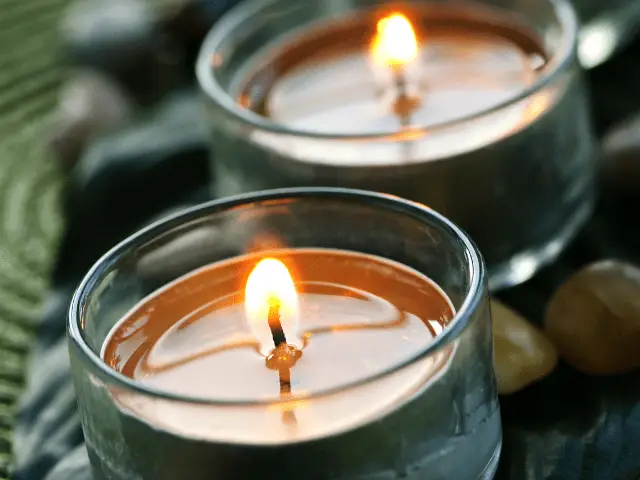
Candles could well be some of the most delicate items you want to move. The following are instructions and tips we’ve found helpful in moving our own candles.
Packing Materials
Here are the packing materials you’ll want to have on hand to properly pack your candles.
| Supplies for Packing Candles | ||
| Item | Needed For? | Pricing / Purchase |
| Small Moving Boxes | Smaller boxes can help keep fragile items more secure. | Check Price on Amazon |
| Box Dividers | Dividers can help keep glass candle jars from banging into one another and breaking. | Check Price on Amazon |
| Packing Paper | To wrap and protect candles. | Check Price on Amazon |
| Bubble Wrap | To cushion and protect candles. | Check Price on Amazon |
| Packing Tape | To seal boxes. | Check Price on Amazon |
The Packing Process
- Begin by sorting your candles by size and shape. Each grouping should have its own box. If there are damaged candles in the mix, we advise discarding them before packing intact ones.
- Wrap each candle individually in at least two layers of packing (or similar) colorless paper, then bubble wrap or rags, and tape it all around to protect its surface and keep it from melting into other candles.
- Select the best boxes for each candle type and begin filling them. These should be smaller, padded boxes that you’ll then place in larger containers with even more padding and insulation. Of course, if boxes are labeled and packed correctly they do not have to go in a larger container. You can keep them as-is.
- Box dividers are an absolute game-changer for packing fragile items like candles. They’re typically used for glassware, but will work great here as well.
- Finally, make sure that no candles in any of the boxes have room to move around. Then load and seal the larger box(es), placing “fragile” labels on all sides.
Transporting Candles With Little to No Damage
You can also pack your candles in a cooler if you’re traveling by car. Surround the wrapped candles and buffering materials with cool packs and refreeze them overnight when possible. Many motels offer mini-fridge/freezers. But if yours doesn’t, find the coolest possible place to store them.
If you’re shipping your candles or putting them in the moving truck, make sure there’s as much padding and insulation as possible between the candles and outside the main box.
Most Candles Can Be Replaced
If you’ve followed the advice we’ve provided here, your candles should arrive at their destination solid and unbroken—no melted wax or candle “crumbs”! Still, it’s always possible for something to break or incur damage when moving.
So allow us to say this: packing candles for moving will teach you more about careful packing than any glass or ceramic items.
And even if you lose your candles to the forces of nature and gravity, a visit to the local supermarket or big box store should have a bunch of replacements ready and waiting. And if you have an exceptional handmade candle, either keep your eye on it at all times or take a series of photos to remember it—just in case.


